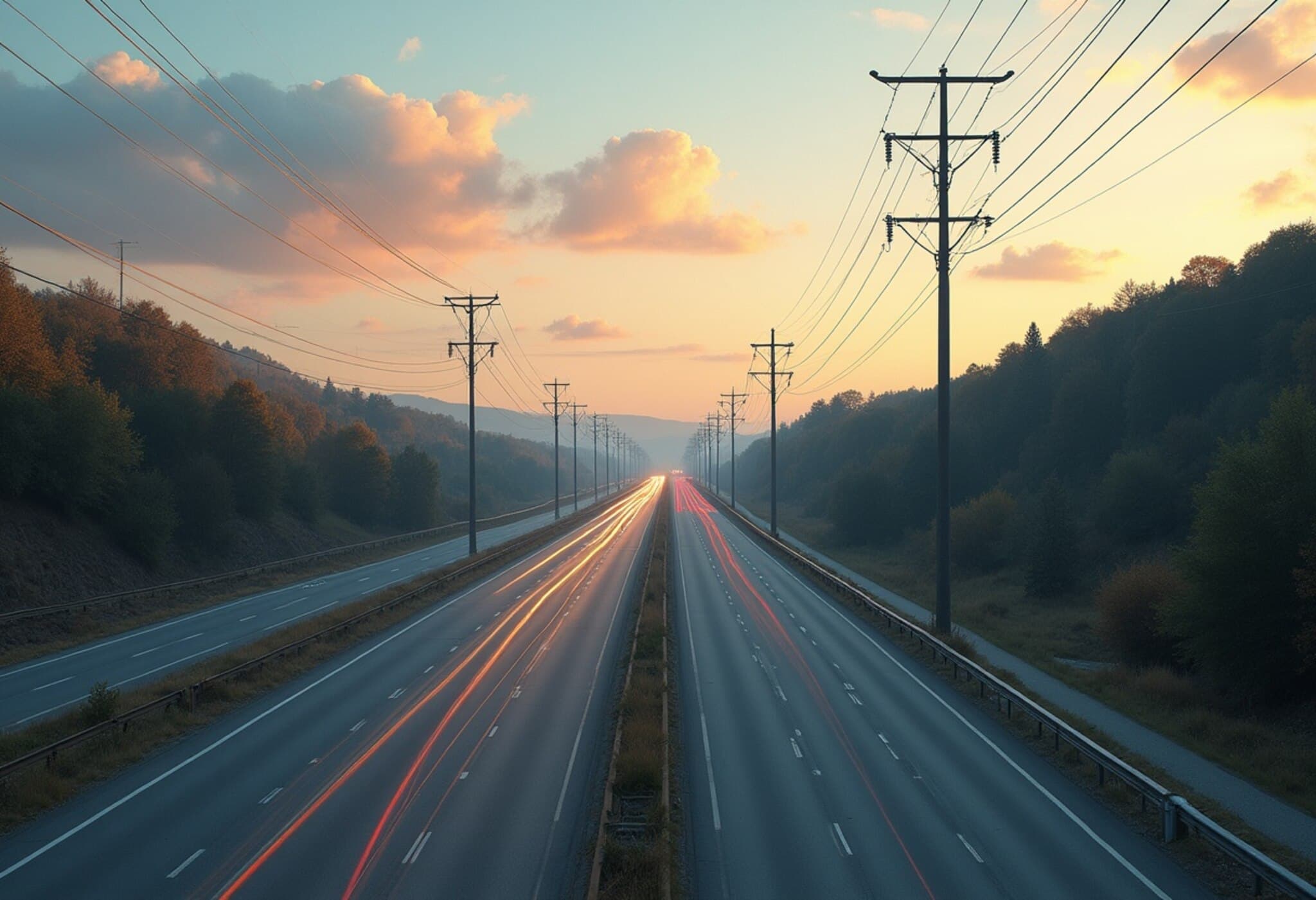America’s Infrastructure: Progress and Persistent Pitfalls in 2025
Despite historic federal investments amounting to trillions of dollars since 2021 aimed at rejuvenating America’s aging infrastructure, the path to dependable and resilient systems remains rocky. The American Society of Civil Engineers recently awarded the nation its highest-ever grade, yet that "best" is still a middling C. This score eloquently captures the paradox: significant efforts underway, but decades of neglect cannot be reversed overnight.
Infrastructure now ranks as the second most important factor companies consider when choosing where to locate their businesses—just behind the overall economic strength of a state. Roads, bridges, ports, airports, power grids, broadband, and sustainable development all directly tie into a state’s competitiveness on the national stage.
Measuring Infrastructure: CNBC’s Approach
CNBC’s 2025 "America’s Top States for Business" study offers a comprehensive comparison on how well states perform across multiple infrastructure metrics, from road and bridge conditions to broadband accessibility and energy reliability.
- Roads & Bridges: Quality and maintenance
- Power Grid Reliability: Average outage hours per year
- Ports, Airports & Rail: Connectivity and freight capability
- Broadband Access: Coverage and affordability
- Shovel-Ready Sites: Availability for new industrial development
- Sustainability & Location: Environmental resilience and proximity to populous urban centers
Infrastructure contributes a significant 16.2% to a state’s overall competitiveness score in the study, underlining its economic centrality.
The 10 States Grappling with Significant Infrastructure Challenges in 2025
10. Arkansas
Arkansas faces the double whammy of frequent severe weather — a devastating tornado in 2023 keeps recent headlines grim — and an electricity grid that ranks among the least reliable nationally. The average resident endured more than 15 hours of outages annually, placing Arkansas third worst for power reliability. Road conditions are also troubling with over 11% rated unacceptable, while broadband access remains a challenge for over a third of the population.
9. Wyoming
Wyoming’s rugged frontier identity appeals to many but poses problems for connectivity. Its roads are highly rated, yet the state’s remoteness—with limited population centers within a day’s drive—combined with poor broadband affordability (only 61% coverage) hinder its appeal for businesses relying on digital infrastructure.
8. West Virginia
This Appalachian state contends with some of the highest flood risks nationally, but efforts to fortify resilience lag behind. Over 18% of bridges are in poor condition, with nearly 13% of roads unacceptable. Residents face prolonged outages and limited broadband, underscoring a critical need for investment in both climate resilience and digital infrastructure.
7. Mississippi
Struggling with hurricane susceptibility and entrenched infrastructure weaknesses, Mississippi lacks a statewide strategy to withstand increasing weather extremes. Poor roadway conditions and frequent power interruptions complicate daily life and economic development prospects.
6. Montana
Known for its expansive landscapes, Montana paradoxically suffers from limited commercial development sites and the nation’s second-worst broadband access. Less than half the population can obtain affordable high-speed internet, a significant barrier to modern business growth.
5. Louisiana
While Louisiana secured a marquee AI industry investment on a sprawling rural site, its infrastructure problems persist, particularly in power grid reliability, ranked at No. 40 nationally. The state's vulnerability to hurricanes threatens long-term stability, and experts worry about the strain new industrial demands may place on utilities.
4. New Hampshire
Despite its location in the densely populated Northeast, New Hampshire wrestles with limited air travel options and a power grid among the worst in reliability rankings. These challenges impact both residents and businesses seeking efficient transportation and energy reliability.
3. Hawaii
Island geography imposes unique hurdles on Hawaii’s infrastructure. The absence of freight rail and limited population nearby restricts some connectivity metrics, but the state also struggles with high percentages of deteriorating roads and an inconsistent power grid, elevating costs and reducing reliability for residents.
2. Alaska
Alaska’s vast expanse and sparse population complicate infrastructure development. Most residents lack access to affordable broadband, a critical deficit in today’s digital economy. With limited commercial land and ongoing power reliability issues, Alaska faces a multifaceted challenge to modernization.
1. Maine
At the top of this unfortunate list, Maine has the nation’s least reliable power grid, compounded by a harsh climate that exacerbates maintenance challenges. Years of policy debates culminated recently in the establishment of a Department of Energy Resources aimed at confronting these issues systemically, spotlighting the critical nature of energy reliability for one of America’s older states.
Expert Insight: Why Infrastructure Still Struggles Despite Massive Investment
Trillions invested and federal enthusiasm aside, infrastructure deficits persist, particularly in states with unique geographic challenges or long histories of underinvestment. According to infrastructure policy expert Dr. Linda Martinez, "You can’t fix decades of neglect with a few years of spending—particularly when natural disasters disproportionately impact certain regions."
Moreover, broadband access emerges as a modern infrastructural divide, reflecting disparities that go beyond roads and bridges. For businesses, reliable digital connectivity is no longer optional. States that improve broadband availability position themselves better in the post-pandemic economy.
The Economic and Human Toll of Infrastructure Deficits
Beyond the headline scores lie daily realities: lost work hours due to power outages, increased vehicle repair costs from poor roads, and the isolation felt by communities cut off by inadequate transportation or digital links. Businesses hesitate to invest in regions perceived as infrastructurally risky, slowing economic growth and job creation.
Looking Ahead: The Road to Resilience and Equity
Policymakers face critical questions: How can funding be targeted to disproportionately affected areas? What role do climate adaptation and technology upgrades play? As infrastructure evolves, equity must be front and center to ensure all Americans can benefit from safer, more reliable systems.
Editor’s Note
This report underscores a fundamental truth: While sweeping federal initiatives mark an important step, infrastructure revitalization is a marathon, not a sprint. States like Maine and Alaska highlight how geography and history intertwine to complicate progress, reminding us that tailored solutions, persistent commitment, and community engagement will be crucial in building resilient, future-ready infrastructure. Readers are encouraged to consider how these challenges affect their own communities and what local voices can do to influence sustainable infrastructure policy.



















